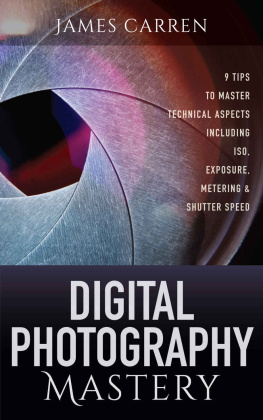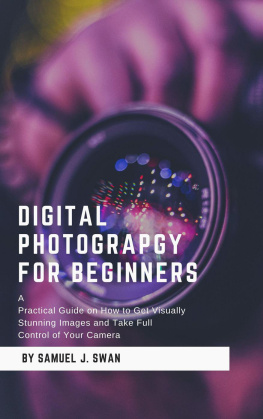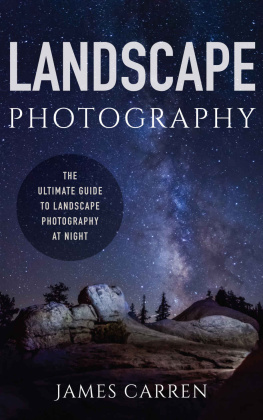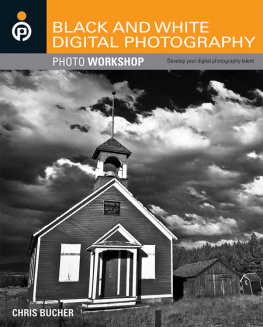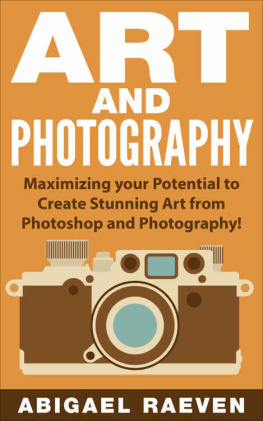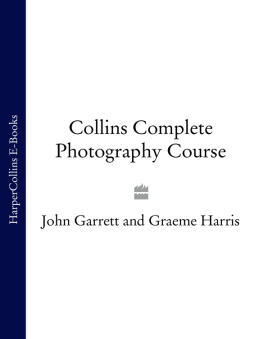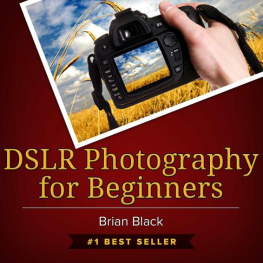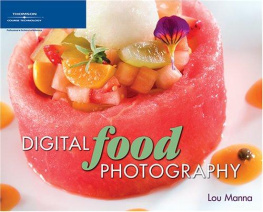DIGITAL PHOTOGRAPHY MASTERY
9 Tips to Master Technical Aspects Including ISO, Exposure, Metering & Shutter Speed
James Carren
2015 Sender Publishing
For more books by this author, please visit
www.photographybooks.us
Copyright 2015 by Sender Publishing - All rights reserved.
This document is geared towards providing exact and reliable information in regards to the topic and issue covered. The publication is sold with the idea that the publisher is not required to render accounting, officially permitted, or otherwise, qualified services. If advice is necessary, legal or professional, a practiced individual in the profession should be ordered.
From a Declaration of Principles which was accepted and approved equally by a Committee of the American Bar Association and a Committee of Publishers and Associations.
In no way is it legal to reproduce, duplicate, or transmit any part of this document in either electronic means or in printed format. Recording of this publication is strictly prohibited and any storage of this document is not allowed unless with written permission from the publisher. All rights reserved.
The information provided herein is stated to be truthful and consistent, in that any liability, in terms of inattention or otherwise, by any usage or abuse of any policies, processes, or directions contained within is the solitary and utter responsibility of the recipient reader. Under no circumstances will any legal responsibility or blame be held against the publisher for any reparation, damages, or monetary loss due to the information herein, either directly or indirectly.
Respective authors own all copyrights not held by the publisher.
The information herein is offered for informational purposes solely, and is universal as so. The presentation of the information is without contract or any type of guarantee assurance.
The trademarks that are used are without any consent, and the publication of the trademark is without permission or backing by the trademark owner. All trademarks and brands within this book are for clarifying purposes only and are the owned by the owners themselves, not affiliated with this document.
Table of Contents
Preface
* * * Before you get started reading* * *
I have a ONE TIME ONLY offer you can't pass up!
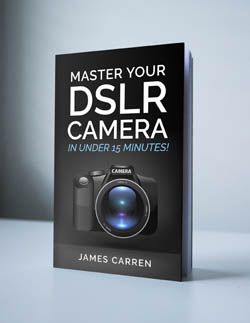
I have a VERY important message you MUST READ!
(Thank Me Later!!)
I promise you it's not spam and I'm not trying to sell you anything!
Introduction
As we discussed in my book Photography Exposure, exposure is probably the most important technical element in all of photography. I say this because an exposure is what a photograph physically is. Of course, you also need to pay attention to things like your composition, your intent, and your post work. But without a good exposure, all of that is a moot point. If you cant see what a photograph is of, or if the exposure is so bad that it distracts from what otherwise would be a competent and poignant photograph, then you have failed. Being technically competent is only half of the process, but I find that it is extremely important to master before you can tackle the big issues in your photography.
In the digital age, too many people mistakenly categorize themselves as photographers simply because they have a DSLR and can shoot it on auto. While this can certainly be a gateway into the world of photography, as it was for me, this does not make you a photographer. So how do you begin to become a photographer? Well, you must master your camera, and understand its functions so that youre in complete control of the outcome. Thats what this book is all about.
Im going to cover some more advanced aspects of exposure, including some of the science and math behind it, as well as the techniques of metering and bracketing. Ill explain how exposure can differ when working with different types of film, as opposed to digital. Then well talk about shooting modes, which can help you to become a better photographer, and work your way up to completely manual shooting. Different lighting conditions are obviously key as well, since youll need to know how to control your exposure indoors, outdoors, and on many kinds of days. Finally, Ill talk about the editing process, and my favorite editing program, which is Camera RAW. Since we will be talking about exposure for film, we should also talk about editing that exposure. Even if you arent a film photographer, (as I assume most of you are not), I still think learning about the original thing is beneficial. I want this to be as well rounded as it can be for its length.
Tip 1: Capture As Much As Possible in Camera
No matter what, whether you are an experienced photographer or brand new to this, I feel like capturing as much as you can in-camera is good practice. So what exactly do I mean when I say that you should capture everything in-camera? It basically means, dont rely so much on editing. Too many times, I hear clients (and even other photographers), say something along the lines of, I like this photo, but the highlights are all blown out. Ill just fix it in post. Or, I dont like the position of her body, can you fix it in post?
Now, the first statement, while it does make me roll my eyes, is at least slightly reasonable. Yes, if you have a photo you really like that is slightly technically unsound, by all means, fix it. But if you know that you messed up that photo and you have the opportunity to shoot it again more correctly, do so. Dont just look at it and settle, and think that you can fix it later. Because while you may feel that you are saving yourself some time right now, in the long run youve just made that much more work for yourself. Fixing a problem is always so much more difficult and time consuming than you anticipate, especially when you could have just prevented it.
Dont use post work as an excuse for bad photos. If its not shot correctly, do it again.
What about that second statement? I dont like the position of her body, can you fix it in post? While it is possible to put someone elses head on a different body in Photoshop and make minor adjustments to body position by layering two or three different pictures, its not possible to change everything. For example, if you have a photo of someone who is stationary when what you really wanted was for them to be jumping, you can try to splice their torso onto different legs, but more often than not, the result just looks disjointed and a little bit like Frankensteins monster. Ive had clients ask for this very thing before, and no one is ever very satisfied with the result.
Anything thats technical, anything that you do have control over, you should try to take care of while the camera is still in your hand. Be conscious and in control of the choices you make as a photographer, and save the post work for things you cant change, like a blemish here or there, or a shadow that needs a little pop of light. This book is all about familiarizing yourself with your camera so that you dont feel the need to compensate for poor technical skills. If your technical skills are strong, you then have a good basis to begin to explore what you really want to in photography. Youll be proud and save yourself a lot of unnecessary work when your images only need minor touchups.
A lot of people love to use Photoshop in order to combine multiple photos and create whats called a composite. This is different from using Photoshop to compensate for poor skills. Most of the time, when making a composite, you have to know exactly what it is you need ahead of time. For example, if you know that a scene you need to shoot is going to be backlit, which often makes the foreground over bright and the background way too dark, then you know that youll need to take two separate photos. This will ensure that you get a proper exposure for both areas, and once composited, you can have one good composition. That is an example of a reason to use Photoshop for more than just basic edits.
Next page
